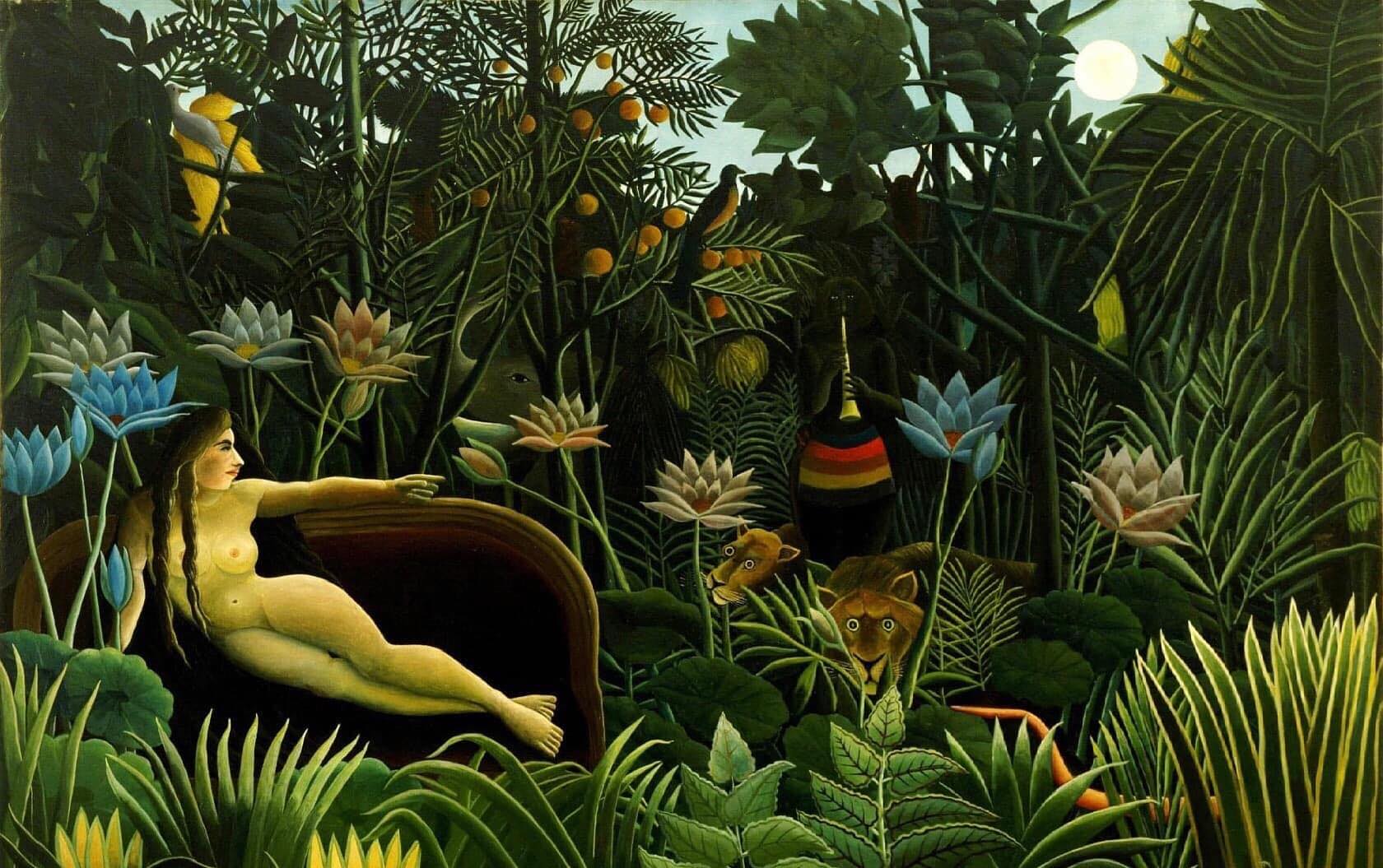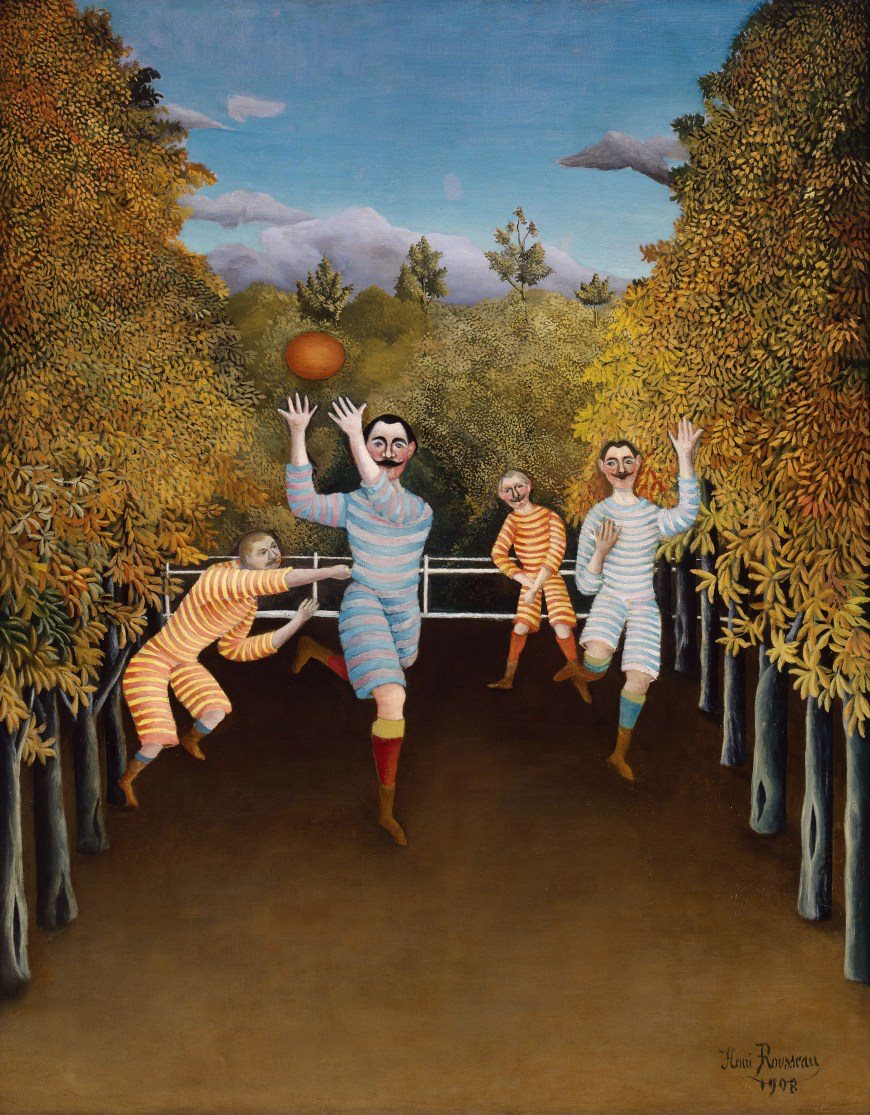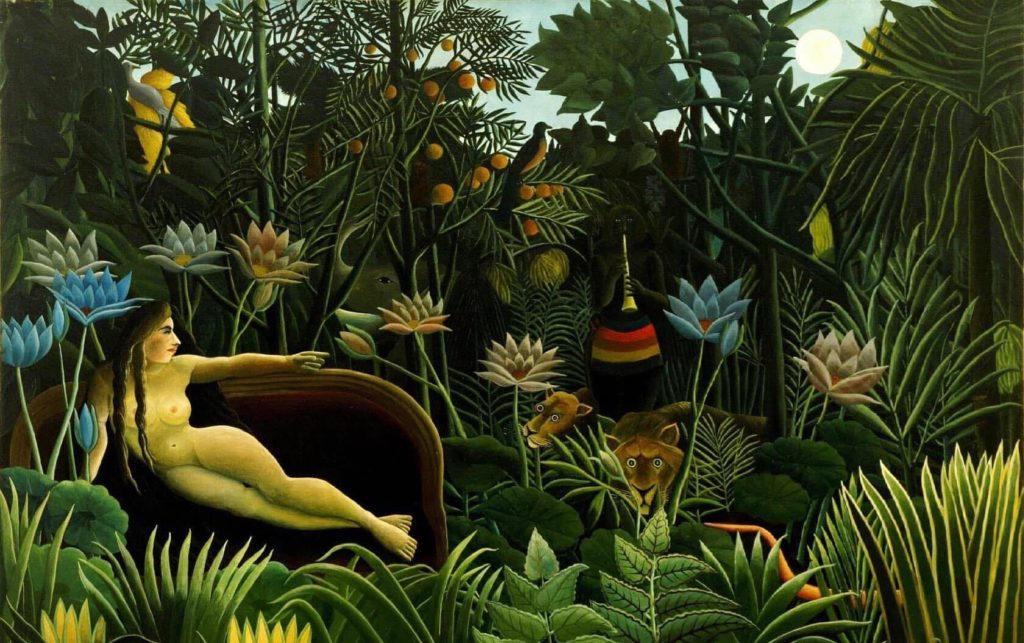Henri Rousseau is proof that you can do everything in life. At a mature age he decided to devote himself to art and as a self-taught man he proved to be able to obtain artistic recognition, albeit after many years.
Who was Henri Rousseau
Henri Julien Félix Rousseau (Laval, May 21, 1844 – Paris, September 2, 1910) was a French painter. He grew up in a small French town with his father, a merchant, and his mother. Decide to drop out of studies to enlist as a volunteer in the infantry in order to avoid consequences, possibly criminal, following a petty theft. With the death of his father, however, he decides to leave the service and move to the French capital to find an honest job.
Once in Paris he found a job as a bailiff’s secretary but it didn’t last long.
The war with Prussia in fact forced him to enlist again but he was soon discharged due to his mother’s widowed status.
Back in the city, he fits in as tax collector in the Paris municipal tax office. He has held this position for over twenty years and right there realizes that he wants to become a painter and so, he decides to leave it while always remaining “Rousseau il Doganiere”.
The beginning of Henri Rousseau’s career
He begins to make his first works by working from self-taught and taking advantage of the advice of painter friends Félix Auguste Clément and Jean-Léon Gérome. “Winter landscape with a war episode” and “Landscape with mill and cart” belong to this phase of his production. In 1890, however, he already managed to make himself quite well known thanks to the well-known “Self-portrait – Landscape” appreciated for his almost ironic and pessimistic vision of time.
Certainly one of the most determining factors in his artistic success is it study of the works exhibited at the Louvre Museum where he has the opportunity to analyze the works of great artists. This new cure for art allows him to be accepted to the Salon des Indépendants, a less haughty place than the Salon Officiel, where he has the opportunity to exhibit for several years.

With the discovery of the Dutch-born painter Frans Post, his artistic production it orients itself towards something more exotic. In fact, it represents a vegetative environment that draws a lot of inspiration from fantasy, often leading the criticism to remain confused and often amused. To this is added the well-known clarification that his colleagues usually make that his self-taught study has as its object. Rousseau, however, stated that he freely refused to attend academies and ateliers, but this also led him to be excluded from the artistic environment.
Henri Rousseau and the long-awaited success
L’artistic inconsistency much criticized by colleagues, it has matured over the years, leading him to pay more and more attention to light and perspectives. If in the first works one sees an inability to follow the perspective relationships, towards the end of his career it is possible to see a great maturation in the use of space. This improvement also attracts the attention of critics who, although not completely changing their opinion on his works, soften their judgments.

Also his colleagues change their minds on his account and consequently spends the last years of his life surrounded by intellectuals. The almost magical atmosphere, as well as exotic, becomes avant-garde in the eyes of the artists of the time. In fact, he begins to obtain recognition from artists such as Paul Gauguin, Apollinaire and George Braque. There is also no lack of support from the Symbolists, including Pablo Picasso, who complimented him on the skilful use of color.

